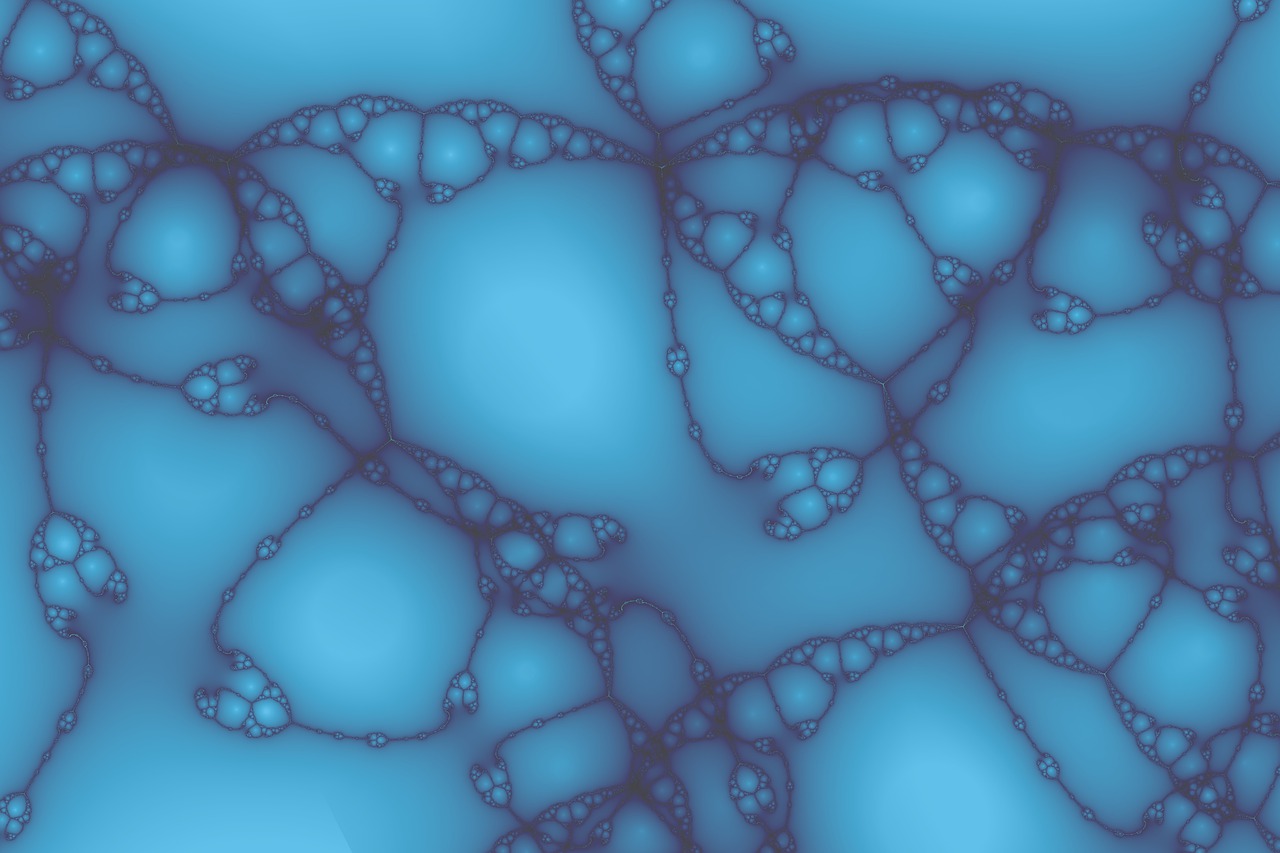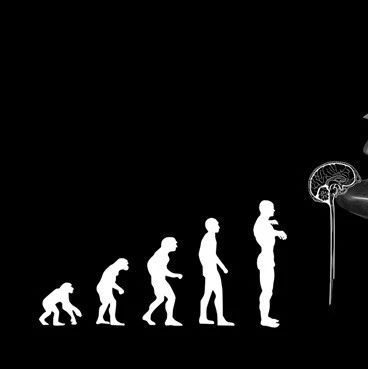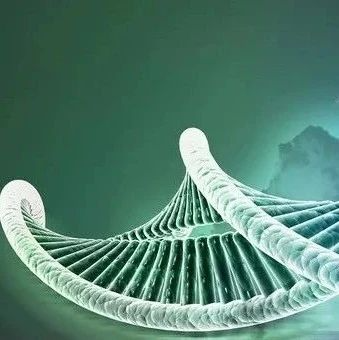摘要:“鸟类始祖”的光环,始祖鸟整整戴了150年,今天被摘下了。今天出版的英国《自然》杂志刊登中科院古脊椎动物与古人类研究所研究员徐星等人的论文:经最新的系统发育学分析,始祖鸟应属于早期恐爪龙类,而不属鸟类,它不再被认为是最早的鸟类。
1861年,德国索伦霍芬附近的朗恩艾特罕,在距地表约30米深的奥特曼矿坑中,法兰克福森肯堡自然博物馆的梅耶在晚侏罗世沉积地层中,首次发现了始祖鸟化石:它虽有很多爬行动物的特征,却已有了羽毛,骨骼形态也已在向鸟类过渡。150年间,它作为“最原始鸟类”的地位虽时受质疑,却一直稳处于鸟类起源研究的核心位置。
150年间,科学家孜孜不倦地追寻着恐龙如何演化成鸟类的各种细节。徐星告诉记者,为了探寻到底是哪一类恐龙演化成了鸟类,以及最原始的鸟类是什么样的,古生物学界根据系统发育学理论,构建起了一棵反映生命演化进程的“生命之树”,每发现一种新化石,都会根据几百个特征参数的统计分析,为新物种在“生命之树”上定位。
始祖鸟,就站在恐龙即将进化成鸟类的门槛上:恐龙在这里分化成了两支,一支变成了原始鸟类,另一支则演变成了恐爪龙类。
近十几年来,辽西热河生物群发现了大量带羽毛的恐龙、原始鸟类的化石。徐星和同事们发现,始祖鸟在总体形态上更像郑氏晓廷龙、赫氏近鸟龙等恐爪龙类,与热河鸟、会鸟和孔子鸟等原始鸟类反而差距更大。
“早期鸟类已累积了89个物种,384个形态学参数,每次分析都会对所有物种进行比较,确定它们在生命树上的位置。”徐星说,随着数据的累积,始祖鸟的“鸟类始祖”地位逐渐开始动摇,直到“最后一根稻草”——郑氏晓廷龙的出现,才正式改变了始祖鸟的位置。
“我们把郑氏晓廷龙添加进‘生命之树’后,再重新定位始祖鸟时,发现它的位置从原始鸟类移到了原始恐爪龙类。”徐星说,这个结果令人震惊——它将改变已存在了150年的定论。
始祖鸟如若地下有知,恐怕难免有些失落。尽管恐爪龙类与鸟类“亲缘”甚密,又曾广泛分布于亚洲、南美洲和非洲,但毕竟早已灭绝——怎似鸟类,至今仍千姿百态地翱翔于蓝天。
“电影《侏罗纪公园》里的迅猛龙,还有发现于我国辽宁的小盗龙,都是恐爪龙类中的代表。现在起,它们得改奉始祖鸟为祖先了。”徐星说。
那么,谁将有资格冠上“鸟类始祖”的称号呢?古鸟类专家、古脊椎所研究员周忠和告诉记者,目前还难有定论。他觉得,最近一些年来中国发现的大量带羽毛的恐龙化石,特别是来自侏罗纪的带毛恐龙化石,确实对研究鸟类起源提出了较以往更为重要的证据,也必然对许多传统的观点提出重大的挑战。另一方面,几年前国外学者研究最新发现的始祖鸟化石时,已提出过类似但不尽相同的观点。
周忠和认为,这篇文章是依据现有的资料和解释,提出了一种新的假说,要真正动摇人们对于始祖鸟一百多年来的看法,并成为学界普遍接受的观点,还需要大量后续的工作不断地检验。
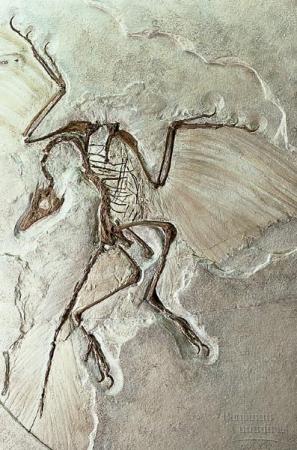
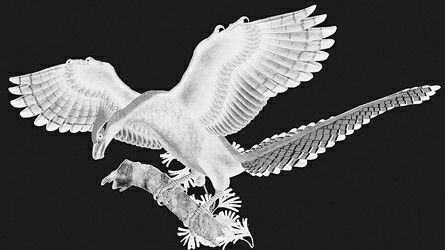
热河鸟复原图
生物探索推荐英文论文摘要:
Nature 475, 465–470 (28 July 2011)
Doi:10.1038/nature10288
An Archaeopteryx-like theropod from China and the origin of Avialae
Archaeopteryx is widely accepted as being the most basal bird, and accordingly it is regarded as central to understanding avialan origins; however, recent discoveries of derived maniraptorans have weakened the avialan status of Archaeopteryx. Here we report a new Archaeopteryx-like theropod from China. This find further demonstrates that many features formerly regarded as being diagnostic of Avialae, including long and robust forelimbs, actually characterize the more inclusive group Paraves (composed of the avialans and the deinonychosaurs). Notably, adding the new taxon into a comprehensive phylogenetic analysis shifts Archaeopteryx to the Deinonychosauria. Despite only tentative statistical support, this result challenges the centrality of Archaeopteryx in the transition to birds. If this new phylogenetic hypothesis can be confirmed by further investigation, current assumptions regarding the avialan ancestral condition will need to be re-evaluated.
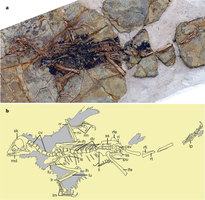
Figure 1: Xiaotingia zhengi holotype (STM 27-2).
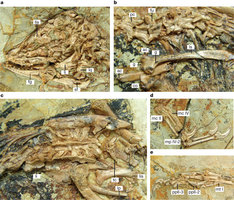
Figure 2: Selected skeletal elements of STM 27-2.
生物探索推荐英文原文报道:
Mounting evidence shows famous fossil more closely related to Velociraptor.
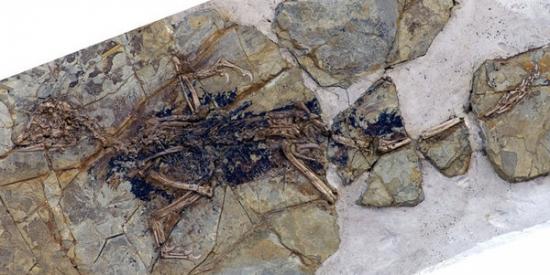
The discovery of Xiaotingia zhengi has knocked Archaeopteryx off its perch as the first bird.
Analysis of fossil traits suggests that Archaeopteryx is not a bird at all. The latest discovery of a fossil that treads the line between birds and non-avian dinosaurs is leading palaeontologists to reassess the creature that has been considered the evolutionary link between the two.
Archaeopteryx has long been placed at the base of the bird evolutionary tree. It has traits that have helped to define what it is to be a bird, such as long and robust forelimbs. Yet in recent years, the discoveries of numerous small, feathery dinosaurs have created a conundrum for palaeontologists, raising questions about which animals are the ancestors of modern birds and which are just closely related cousins.
The fossil that is driving the latest Archaeopteryx rethink is called Xiaotingia zhengi, and is described in Nature today1 by Xing Xu, a palaeontologist at the Institute of Vertebrate Palaeontology and Palaeoanthropology in Beijing, and his colleagues. It was found in western Liaoning, China, in rocks dating to the Late Jurassic epoch, 161 million–145 million years ago. Like many similar fossils, it is surrounded by feather impressions in the rock, but has claws on the ends of its forelimbs and sharp teeth.
These traits by themselves do little to help place the fossil in the dinosaur–bird transition, but Xu reports that it also has extremely long middle and last finger bones and a wishbone with an L-shaped cross-section at one end. These characteristics, Xu argues, identify Xiaotingia as very closely related to Archaeopteryx and another feathery relative, Anchiornis.
After analysing the traits present in Xiaotingia and its relations, Xu and his colleagues are suggesting that the creatures bear more resemblance to the dinosaurs Velociraptor and Microraptor than to early birds, and so belong in the dinosaur group Deinonychosauria rather than in the bird group, Avialae. Many features led the team to this decision, but the most immediately noticeable are that Xiaotingia, Archaeopteryx and Anchiornis have shallow snouts and expanded regions behind their eye sockets. Microraptor has similar traits, but the early birds in Avialae have very different skulls.
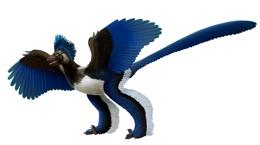
Artist’s impression of Xiaotingia zhengi
Out of first place
The first Archaeopteryx specimen was discovered in 1861, just a few years after the publication of Charles Darwin's On the Origin of Species. Its combination of lizard-like and avian features made it the ideal 'missing link' with which to demonstrate evolution from non-avian dinosaurs to birds. But the latest rearrangement knocks it from its position as the earliest bird. "I think Archaeopteryx 's placement was the result of both history and relatively poor sampling at the dinosaur–bird transition," explains Xu.
Even so, he acknowledges that the move is bold. "Because it has held the position as the most primitive bird for such a long time, I am kind of nervous about presenting this result," says Xu. But immediate responses from others in the field suggest that the decision will be widely embraced.
" Archaeopteryx was a bird because it had feathers and nothing else had them. But then other animals started being found that had wishbones, three-fingered hands and feathers. Heck, even T. rex had a wishbone. So one by one we've learned Archaeopteryx 's uniquely avian traits weren't so unique. The writing was really on the wall," says Lawrence Witmer, a palaeontologist at Ohio University in Athens.
Whether this change will be permanent depends on what other animals are discovered in the future, says Thomas Holtz, a palaeontologist at the University of Maryland in College Park. "I don't think this is going to be the last word on this subject. You take this new Chinese species out of the mix and the argument falls apart, so the new placement is precarious at best until further evidence is dug up."


